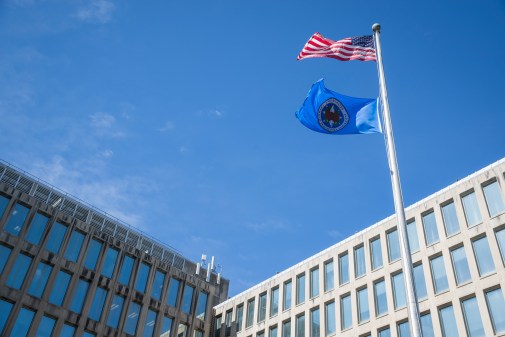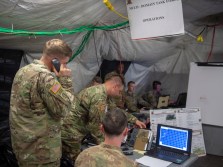NGA embarks on ‘odyssey’ toward a transparent future
The National Geospatial-Intelligence Agency hopes to throw off the shroud of secrecy that has become a stigma of the U.S. intelligence community through open-sourcing, publicizing data and moving to the cloud, according to a new strategy report released in late June.
A product of the cold-war era, the NGA has often lived up to its reputation of intrigue and clandestine operation, admitted Director Robert Cardillo at 2015 U.S. Geospatial Intelligence Forum GEOINT Symposium June 23rd in Washington, D.C.
“For decades, intelligence was like a regulated currency. We guarded it jealously. We controlled it tightly,” Cardillo said. “As a currency, hoarding is a good thing. That’s clearly what we did and still do to a large degree, to great advantage, because old power was and is still useful. But in today’s world, our enterprise must operate differently: Less like a currency and more like a current.”
For the NGA, the “current” has led to data transparency.
As the need for geospatial imaging in climate, oceanographic and GPS projects intensifies, so too does the pressure on agencies with access to extensive satellite networks. Geospatial data can be incredibly useful for tracking changes in vegetation over certain periods; geo-linking, a process by which addresses are linked to latitudes and longitudes; and plotting weather patterns, among other things.
“You have to consider the kinds of niches that can be derived from open sources,” said Chris Rasmussen, an NGA project lead. “You have to stay open source to stay relevant.”
Landsat, a 40-year-old program jointly founded by NASA and the United States Geological Survey that falls under the NGA domain, is considered the gold standard in natural resources satellite imagery. Because of the high-definition nature of much of Landsat’s data, however, acquiring and storing it can be expensive and time consuming. Analyzing the data poses an even larger challenge.
The NGA has begun to ameliorate these difficulties by transferring up to one petabyte of Landsat data into the cloud, which offers enhanced organization and easier access. About 170,000 Landsat scenes are currently publicly available, with another 700 added each day. Since the program’s March 19 launch, it has experienced 270 million hits from 147 countries and transfers an average of 19 TB of data daily.
Geospatial data has also become a critical element in disaster relief and response, a point which was emphasized during the 2014 Liberian Ebola epidemic. Team GEOINT — an NGA-spearheaded conglomerate of government, industry, academia and international partners collaborating towards more thorough, timely geospatial data — was able to compile and release satellite imagery publicly on the Web. This allowed health care responders to isolate outbreaks and effectively place treatment centers.
“That time-saving led to life-saving,” Cardillo said.
It also prompted the agency and Team GEOINT to incorporate disaster response into its modus operandi moving forward.
NGA was tested once again in the aftermath of the April 2015 Nepal earthquakes, which caused roughly $5 billion in damage and killed more than 9,000 people, including 19 climbers on Mount Everest.
Within the first 24 hours, the initial response team, comprised of the NGA and its GEOINT allies, created an open Web portal with atlases of the cities affected, enabling responders to assess damage and prioritize the search for survivors. Collaborators included U.S. Pacific Command, Transportation Command, the 3rd Marine Expeditionary Force and the State Department, as well as the United Kingdom and Canada.
“[GEOINT] uses skills and collective power to advance our craft, extend capabilities, and connect the community of practitioners through continual, informed and ongoing contributions, [and] flexible, open data-sharing arrangements,” Cardillo said. “It finds innovations, inventions and methodologies to benefit the rest of the team.”
The availability of GEOINT data has also been a major driver in software development. The NGA has made a bounty of data available on Github, an online open source software collaborative. It recently released an app called Disconnected Interactive Content Explorer, or DICE, which allows users to access maps offline after an initial download.
“We were the first agency to have an app,” Rasmussen said. “It used to take hours [to access the data], and now it takes minutes.”
The success of GEOINT is central to the success of NGA, Cardillo said. “NGA cannot do it alone. NGA will not do it alone. So we must leverage the collective strength of the team, to not only determine the patterns of normalcy, but also to develop the technical solutions and smartly employ all the data that’s already at our fingertips.”
In his closing comments, Cardillo addressed his partners directly, underlining the importance of cooperation towards their shared goals in this epic undertaking.
“As you look to the future and your role on Team GEOINT, please think big. And know that to really achieve our potential, we need to take some risks as partners,” he said. “But we need you to take some risks as well, to strive for something big on this joint odyssey.”






